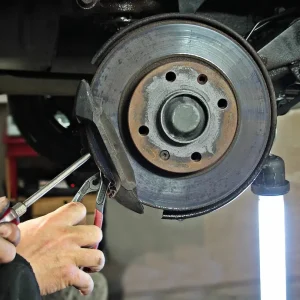Ideal for use in city centres, Autonomous Emergency Braking systems have been proven to reduce the incidence of crashes. Jack Carfrae explains what they are and why your insurance costs could be about to drop.
You may have heard the term and you may have seen some of the crash-test videos on YouTube, but Autonomous Emergency Braking systems – AEBs, for short – haven’t yet reached the prevalence of ABS brakes or airbags in the motor industry.
There is, however, a very good reason that fleets should take notice of them. Numerous safety bodies have clubbed together and proved that, when fitted, they make a vehicle an awful lot safer. So not only are you looking at better duty of care and risk management, you’re also cutting costs in a significant way.
Big-hitting safety bodies are latching on to the technology at an increasing rate of knots and fast making it a requirement as part of future tests and scoring systems. Euro NCAP has already announced that AEBs will become part of its industry benchmark star-rating system from 2014, while research centre Thatcham has published evidence from the US, which proves that crashes are 27% less likely in vehicles fitted with the systems.
In turn, this has encouraged the insurance industry to recognise the benefits and lower the insurance groups of vehicles that are fitted with the technology by up to five categories.
In order to qualify for the group reductions and resultant cost savings, vehicles must have the systems fitted as standard, while manufacturers that offer them as an option further up the range are not eligible for the discounts. Matthew Avery, head of research at Thatcham, tells BusinessCar: “A reduction in group ratings is in process now and works out to one to five groups, but this is only applicable if the system is standard fit.”
He continues: “You’re looking at a 10-15% insurance cost saving on average. Ford reckoned the insurance cost saving worked out to about £50 per car [across the board], so if you spread that across a fleet of any size, it’s huge.”
Several vehicle manufacturers already offer AEB systems as standard fit on their vehicles and those that do are keen to crow about the results. The Mazda CX-5, Ford Focus and Volvo V40 are some of the cars currently on sale that are fitted with AEBs as standard, but the near mandatory inclusion of the technology in future Euro NCAP test requirements means it’s likely to become standard fare on an ever-increasing number of new cars.
While in favour of AEBs and their associated cost reductions, Mark Jowsey, director of manufacturer liaison at whole-life cost specialist Kee Resources, says the move highlights the fact that insurance costs are often ignored by fleets, and warns of the additional risk involved when procuring cars with higher insurance groups.
Jowsey suggests, too, that fleet operators could be looking at an annual saving of around £200 per car for typical, upper medium models fitted with AEBs as standard. He cited an average vehicle in insurance group 33 with an annual cost of £1525 and an identical one in group 28 at £1330.
“If you’ve got a fleet of 50 cars and that applies to, say, half of them, then it’s something that’s really worth thinking about,” he says. “If
I were managing a fleet, that’s the sort of thing I’d be hoping to have on the cars.”
He concludes that the economies offered by AEBs highlight the fact that there are serious savings to be made by scrutinising insurance policies and picking the right vehicles: “Insurance is another really good example of ‘it’s easy to leave it’. [fleets] need to be aware and they need to be more proactive in getting vehicles that are appropriate.”
AEB: So, what is it exactly?
For those who have yet to hear of the technology, AEB uses a series of forward-facing sensors at the front of the car to detect an imminent collision. The system constantly monitors the road ahead and if it believes the car is about to hit something, it emits an audible warning. If there’s no time, it will automatically apply the brakes and bring the car to a halt.
Not every version is identical, but the vast majority of them operate at speeds of around 30mph or less, hence why they’re often stamped with the word ‘city’ by car manufacturers (Volvo’s system is known as City Safety, while Mazda calls its version Smart City Brake Support). The reason for this is that according to UK safety organisation Thatcham, 75% of crashes occur at less than 20mph.





